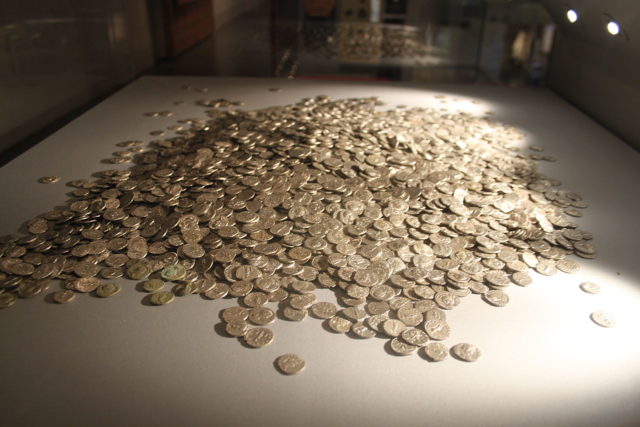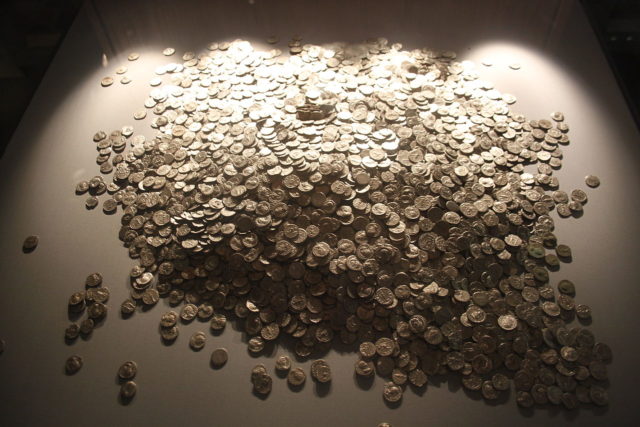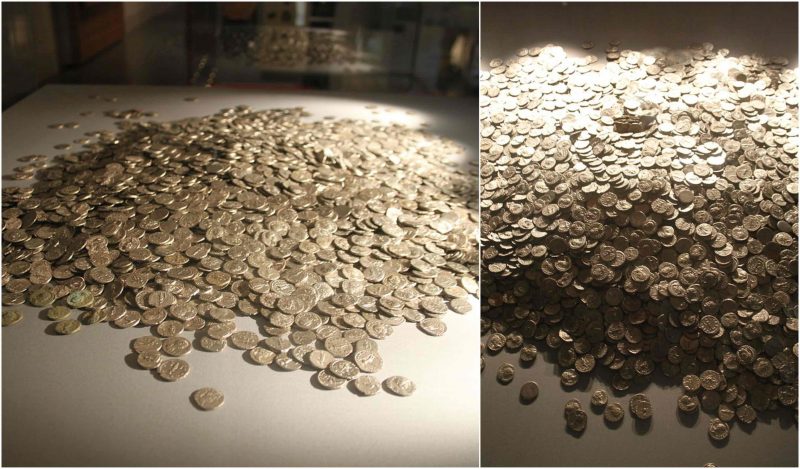The Shapwick Hoard is a hoard of 9,262 Roman coins found at Shapwick, Somerset in September 1998. The coins dated from as early as 31–30 BC up until 224 AD. The hoard also notably contained two rare coins which had never been seen in Britain before, and the largest number of silver denarii ever found in the country.

The hoard was discovered by cousins Kevin and Martin Elliott, a pair of amateur metal detectorists, in a field at Shapwick. Excavation of the site found that it had been “buried in the corner of a room of a previously unknown Roman building” and, after further excavation and geophysical surveying, “revealed the room to be part of a courtyard villa.”
Following an inquest at Taunton, the hoard was declared treasure and valued at £265,000. Somerset County Museum Services acquired the hoard, with the aid of the County Council, the National Heritage Memorial Fund, and other organizations. The collection is now displayed at the Museum of Somerset in the grounds of Taunton Castle. An addendum to the discovery was filed in the Treasure Annual Report 2000 which added a further 23 coins, valued at £690, also found by Kevin and Martin Elliott.

Notable inclusions in the hoard were 260 coins from the time of Mark Antony (31–30 BC), with over half the coins minted during the reign of Septimius Severus (193–211). There were also two rare coins never discovered in Britain before which depicted Manlia Scantilla, the wife of Didius Julianus, an emperor who was murdered four weeks after the coins were struck. Non-Roman coins included were three Lycian drachmae and one drachma from Caesarea in Cappadocia. The latest coin struck was in 224 AD, and it is estimated that the hoard as a whole represented ten years’ pay for a Roman legionary.
Shapwick has been the site of various hoard discoveries over the years, although the 1998 find was by far the largest.
